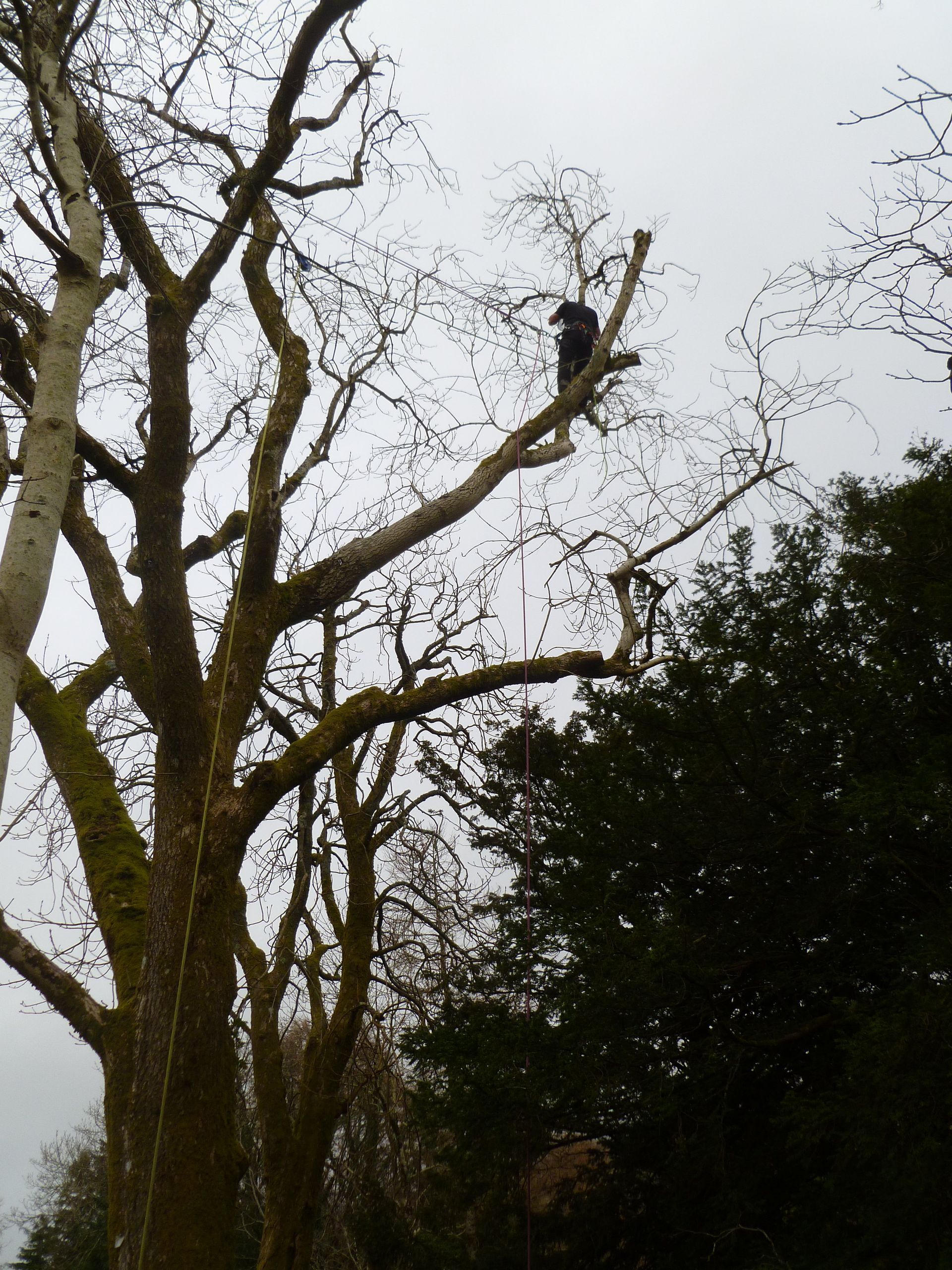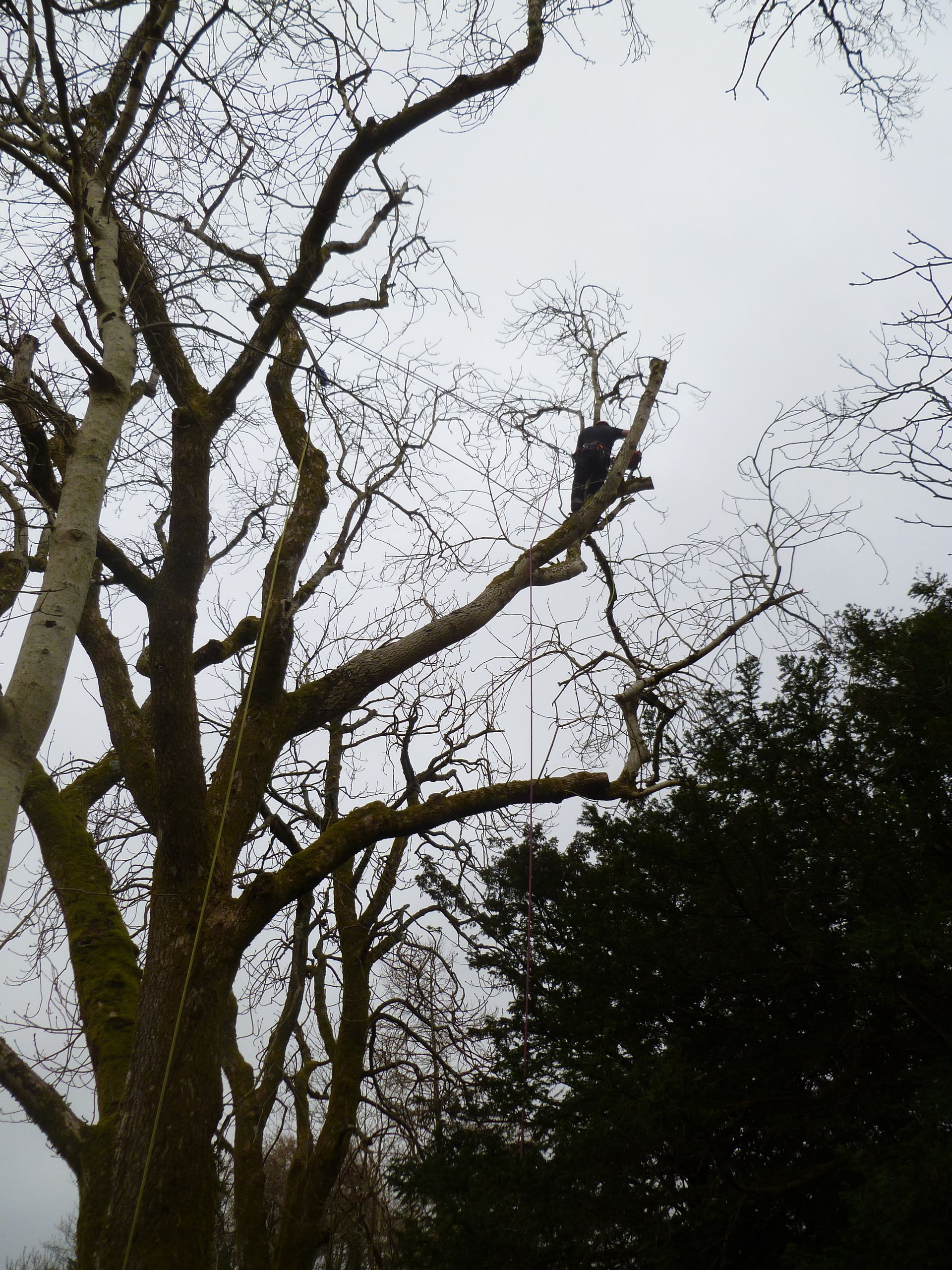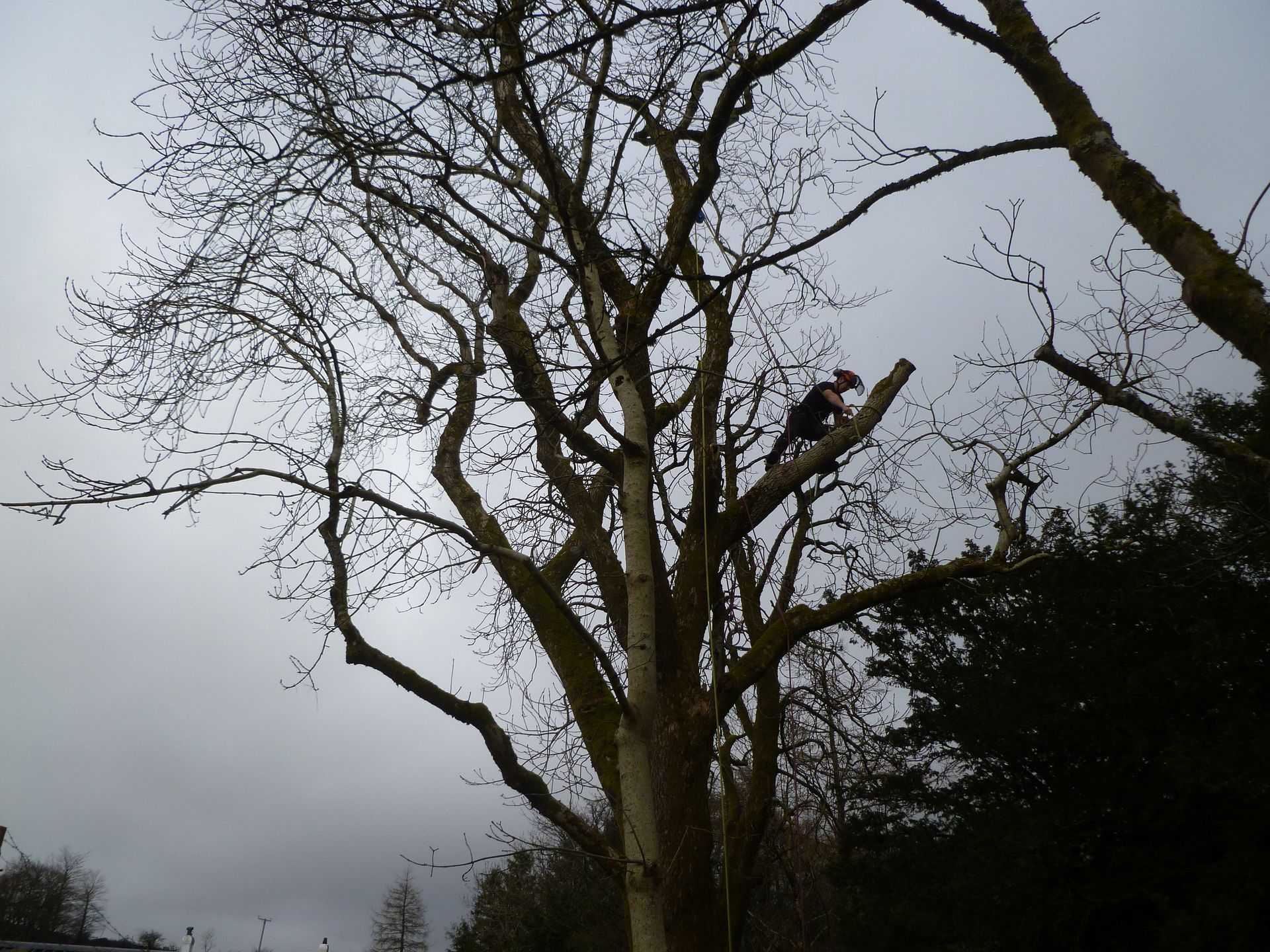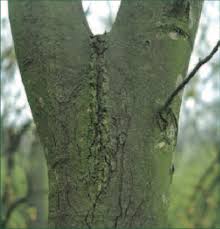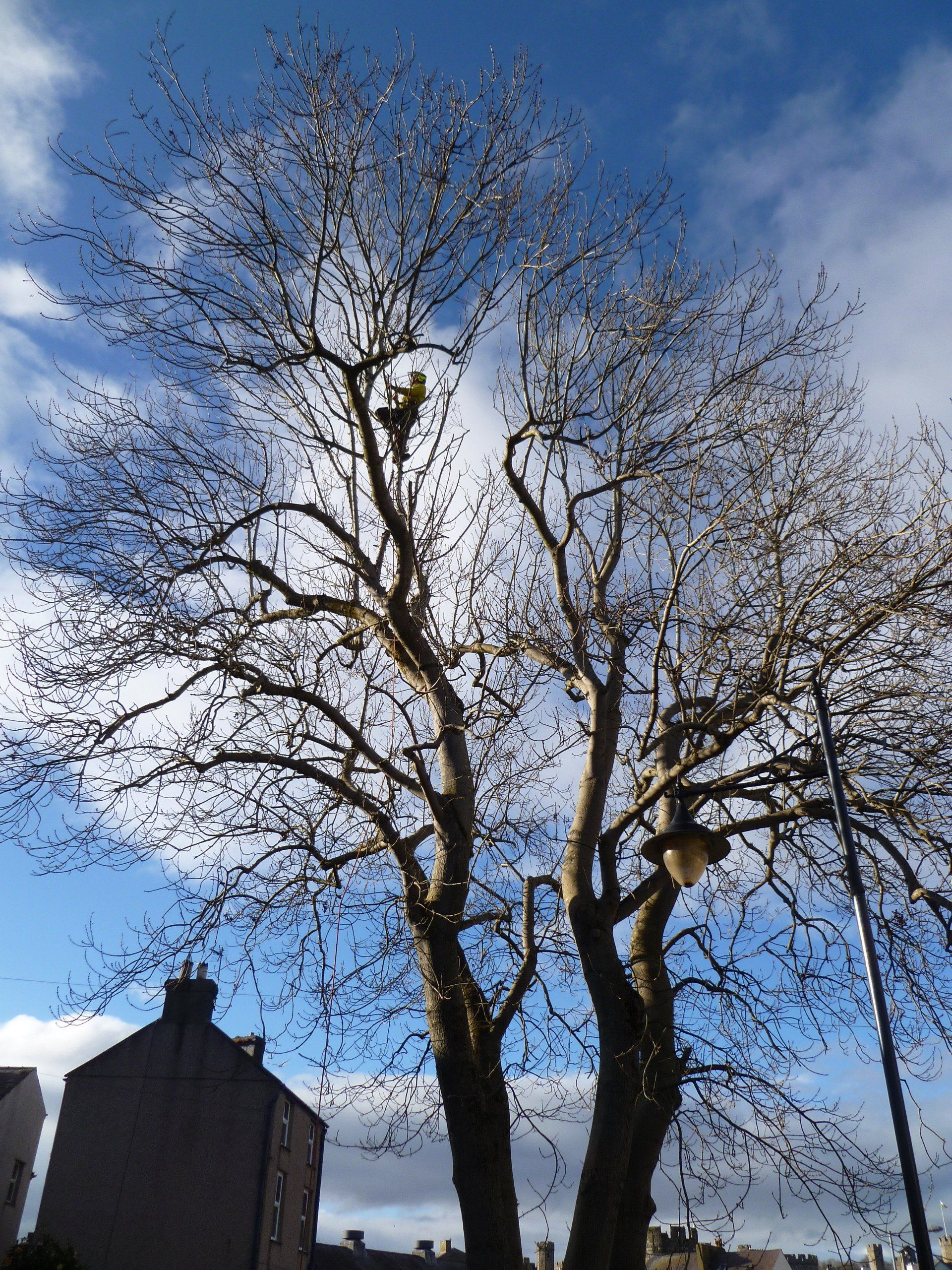By Nathan Davies
•
November 13, 2019
The term "co-dominant stems" is used to describe two or more main stems (or "leaders") that are about the same diameter and emerge from the same location on the main trunk as seen in the picture above. As the tree grows older, the stems remain similar in size without any single one becoming dominant. Why are such stems important to recognize? Co-dominant stems tend to fail more often than others, especially in storms. Though such stems may look fine to the casual observer, they may actually be dangerous. Early recognition of such stems allows remedial action to be carried out. Many of our most common trees in the UK commonly form co-dominant stems. How can you tell if there is a serious problem? Classifying co-dominant stems into 3 risk stages can aid in their management: Stage 1 : Does the union between the two stems form a "V" but there are no other symptoms? A "V" union is much more likely to fail than a "U". Stems with a "V" union compress bark between them as they grow, leaving little physical connection. Stage 2 : Are there symptoms of decay in the union? Can you see rotted matter between the stems? Is there any fluid flowing from the union? Are there woody plants growing in the union? Do you see wide "ears" (swelling) on either side of the union? Stage 3 : Is there any sign of failure? Can you see any cracks in the union itself? Is reaction wood being formed rapidly at the base of the stems? If you have a co-dominant stem that you are concerned about you should seek the advice of a trained professional. This is by no means intended to be used as an extensive guide to tree hazard assessment,simply to aid understanding of some common tree related problems that can cause a tree to fail.




